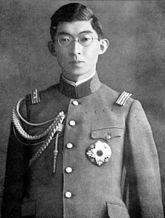This is an old revision of this page, as edited by JimBobUSA (talk | contribs) at 02:28, 19 November 2007 (Undid revision 172406226 by Grant65 (talk)Grant65...stop undoing all edits by myself and other editors!). The present address (URL) is a permanent link to this revision, which may differ significantly from the current revision.
Revision as of 02:28, 19 November 2007 by JimBobUSA (talk | contribs) (Undid revision 172406226 by Grant65 (talk)Grant65...stop undoing all edits by myself and other editors!)(diff) ← Previous revision | Latest revision (diff) | Newer revision → (diff)

| The neutrality of this article is disputed. Relevant discussion may be found on the talk page. Please do not remove this message until conditions to do so are met. (Learn how and when to remove this message) |
Yamashita's gold, also referred to as the Yamashita treasure, is the name given to the loot allegedly stolen in Southeast Asia by Japanese forces during World War II and hidden in caves, tunnels and underground complexes in the Philippines. The number, size, value and fate of the alleged loot troves in the Philippines are unknown.
The stolen property reportedly included many different kinds of valuables looted from banks, safe deposit box|depositories, temples, church (building)|churches, other commercial premises, mosques, museums and private homes. It takes its name from General Tomoyuki Yamashita, who assumed command of Japanese forces in the Philippines in 1944.
According to various accounts, the loot was initially concentrated in Singapore, from where it was later relayed to the Philippines. The Japanese hoped to ship the treasure from the Philippines to the Japanese home islands after the war ended. As the Pacific War progressed, Allied submarines and aircraft inflicted increasingly heavy losses on Japanese merchant shipping. Some ships carrying loot back to Japan were sunk.
Sterling Seagrave & Peggy Seagrave have written two books which deal with Yamashita's Gold. The Seagraves contend that looting was organized on a massive scale, by both yakuza gangsters such as Yoshio Kodama, and the highest levels of Japanese society, including Emperor Hirohito. The Seagraves allege that Hirohito appointed his brother, Prince Chichibu, to head a secret organization called Kin no yuri ("Golden Lily"), for this purpose.
In March of 1988, a lawsuit was filed by Rogelio Roxas against the former President of the Philippines, Ferdinand Marcos. Roxas alleged that Marcos had confiscated crates of gold bullion and a one-tonne gold Buddha he had found while searching for the Yamashita treasure. Roxas died prematurely in suspicious circumstances, leading to suggestions that he was murdered. In 1996, A jury in Honolulu awarded $22 billion in compensatory damages that after the jury verdict had increased with interest to over $40 billion. The jury did not award punitive damages. On November 17, 1998, the Hawaii Supreme Court reversed the judgment.
Critics have questioned the extent to which the loot existed. University of the Philippines professor Rico Jose has questioned the theory that treasure from mainland South East Asia was transported to the Philippines: "By 1943 the Japanese were no longer in control of the seas... It doesn't make sense to bring in something that valuable here when you know it's going to be lost to the Americans anyway. The more rational thing would have been to send it to Taiwan or China."
National Historical Institute (NHI) chairman Ambeth Ocampo, writer, historian, and Ateneo de Manila University professor notes that most myths are harmless and quite amusing, but some really get people excited. “Two of the wealth myths I usually encounter are the Yamashita treasure and gossip that the Cojuangco fortune was founded on a bag of money…”
“For the past 50 years many people, both Filipinos and foreigners, have spent their time, money and energy in search of Yamashita's elusive treasure.” Professor Ocampo also notes “What makes me wonder is that for the past 50 years, despite all the treasure hunters, their maps, oral testimony and sophisticated metal detectors, nobody has found a thing.”
Many individuals and consortia, both Filipino and foreign, continue to search for treasure sites. A number of accidental deaths, injuries and financial losses incurred by treasure hunters have been well-documented.
Yamashita's gold in popular culture
- Yamashita's gold, though not mentioned by that name, serves as a major plot element of Cryptonomicon, a novel by Neal Stephenson.
- A film about the alleged treasure, Yamashita: The Tiger's Treasure, directed by Chito S. Roño was released in the Philippines in 2001.
- An episode of Unsolved Mysteries, first screened on January 27, 1993, discussed the loot accumulated by Yamashita.
- The latter part of the console game Medal of Honor: Rising Sun is about the gold.
- Yamashita's gold serves as a plot element of Dragon, a novel by Clive Cussler.
Notes
- Chalmers Johnson, "The Looting of Asia", London Review of Books v. 25, no. 22 (November 20, 2003) Access date: January 10, 2007.
- Sterling & Peggy Seagrave, 2000, The Yamato Dynasty: The Secret History of Japan's Imperial Family (Corgi); Gold Warriors: America's Secret Recovery of Yamashita's Gold (2003)(Verso)
- "Roger ROXAS and The Golden Budha Corporation vs Ferdinand E. MARCOS and Imelda Marcos"Access date: November 14, 2007
- "Bureau of Justice Statistics Bulletin, Civil Trial Cases and Verdicts in Large Counties, 1996Access date: November 18, 2007
- Asian Pacific Post, "Searching for the lost treasure of Yamashita" (Wednesday, August 24, 2005) Access date: January 10, 2007.
- "Enduring Myths by Ambeth R. Ocampo (3-17-2004)"
- See, for example, Asian Pacific Post, 2005, Ibid and; BBC, "WWII Japanese bomb kills Philippines treasure hunters" (March 22, 1998). Access date: January 10, 2007.
- "Yamashita: The Tiger's Treasure (2001)". Retrieved 2007-07-16.